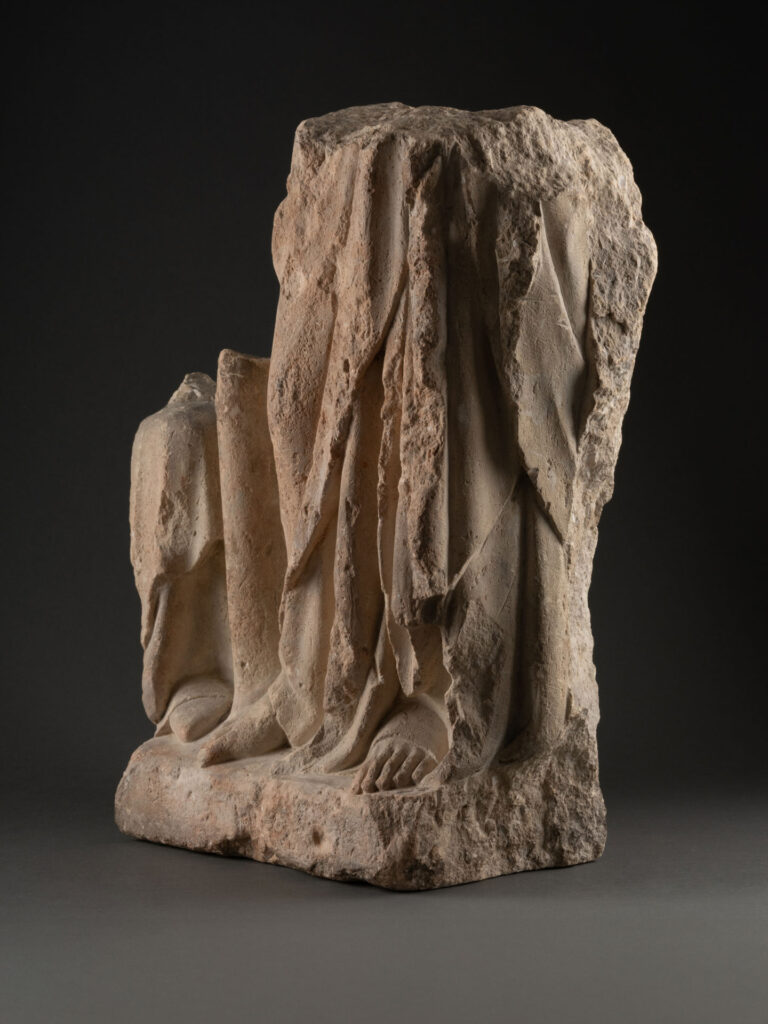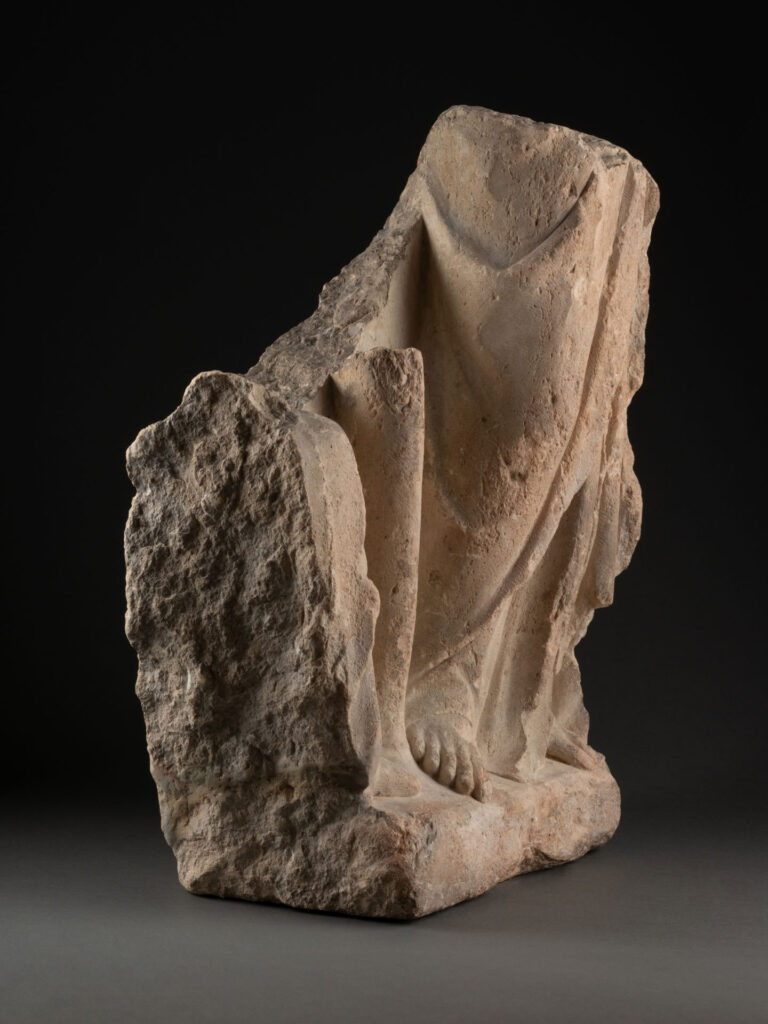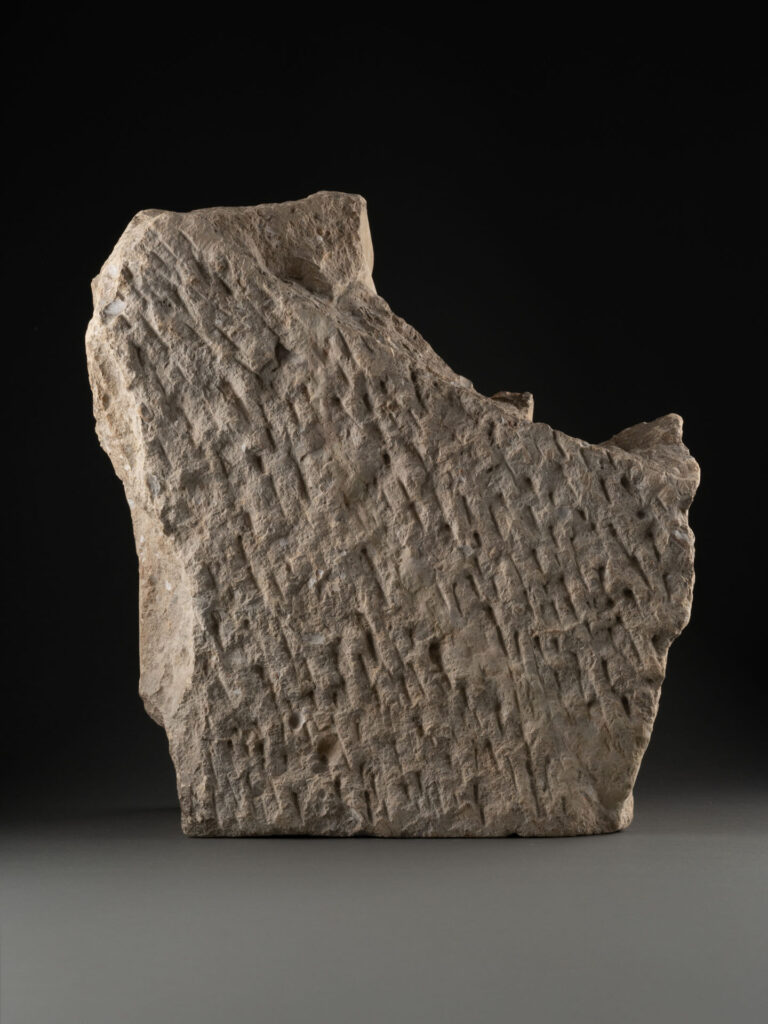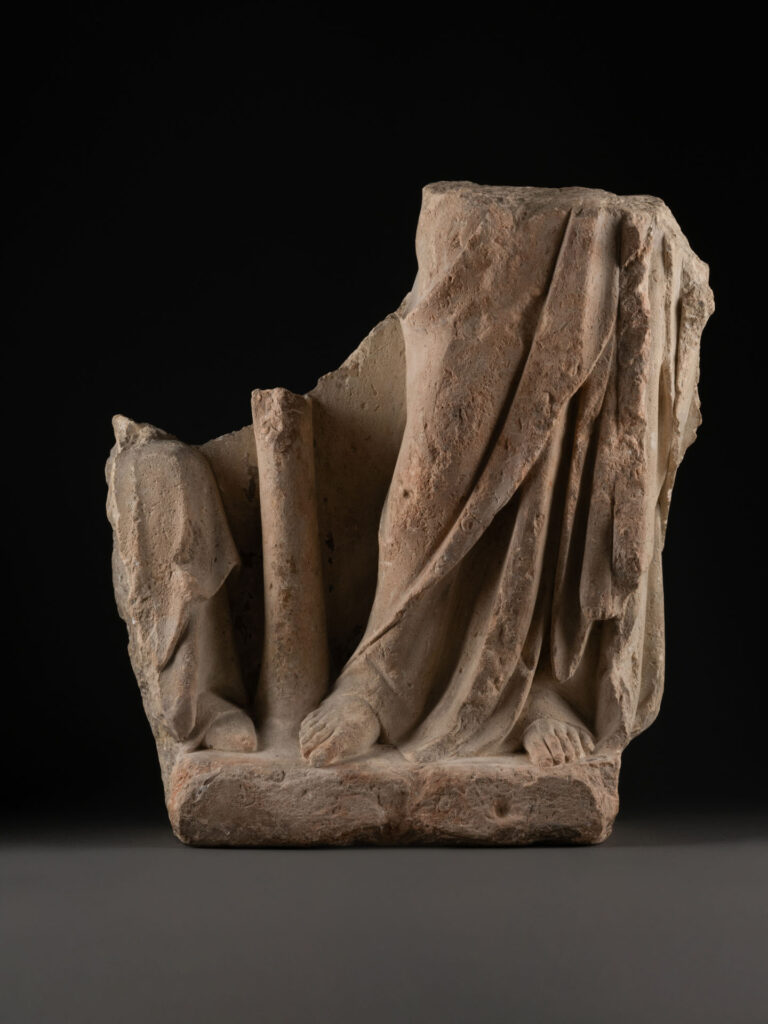This incredible limestone relief from the Imperial period shows the remains of two figures dressed in Roman style. It has been dated to around the 1st and 3rd centuries AD. Although the country of origin is unknown, the togas worn by the figures situate the work within the Roman Empire.
The relief consists of two figures, of which only the lower parts are visible. The figure on the right, with bare feet, appears to be wearing a long, pleated toga covering part of her feet. The figure leans slightly on his left leg and lifts his right foot in a movement to the left.
The figure on the left, meanwhile, retains just one foot, covered and pointed. Her clothes are long, the drape is pleated, and several layers of fabric cascade down her body. The two figures are separated by a straight, columnar decorative element.
The relief, though fragmentary, gives a certain impression of movement and fluidity, emphasized both by the draping of the garments and by the contrapposto of the figure on the right.
The Romans’ use of limestone is not surprising. Less precious than marble, it is nevertheless used in a wide range of works, from statuary to architecture. It was the latter who introduced limestone quarrying to Gaul.
What’s more, in more remote regions of the Empire, the use of limestone is firmly rooted in tradition. In Cyprus, for example, the production of limestone sculpture is attested as early as the Archaic period (8th century BC – 5th century BC), and takes on several Roman influences during the Imperial period.
The presence of the toga helps to situate our work. In ancient Rome, the toga was the symbol of citizenship. As a result, it can often be seen in works depicting scenes from Roman life. Here, the toga is long, dragging along the ground, partially covering the figures’ feet. The folds of the garment are prominent, creating an impression of fluidity.
The figure on the left, while featuring only a single part of the leg, offers a few special features. Firstly, it’s quite rare to find such pointed feet in Roman art from the Imperial period. An example can be seen in a marble depicting the goddess Hecate, dating from the 2nd century CE and housed at the Met Museum in New York.
Secondly, the folds in the drapery around her knee suggest that the figure may be seated, or performing an exaggerated contrapposto.
Although fragmentary, the work is a striking testimony to the production quality of limestone from the Imperial Roman period.
( Good condition. Restoration to reunite the two pieces. French private collection, family of architects. Acquired before 1980 )



